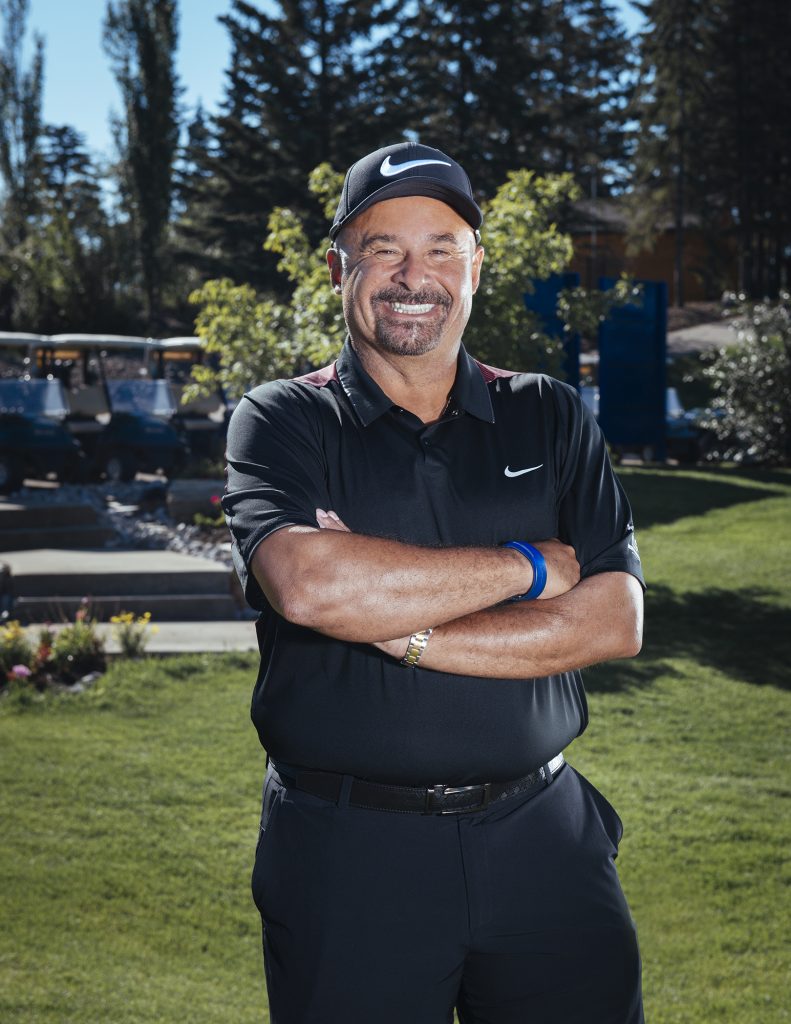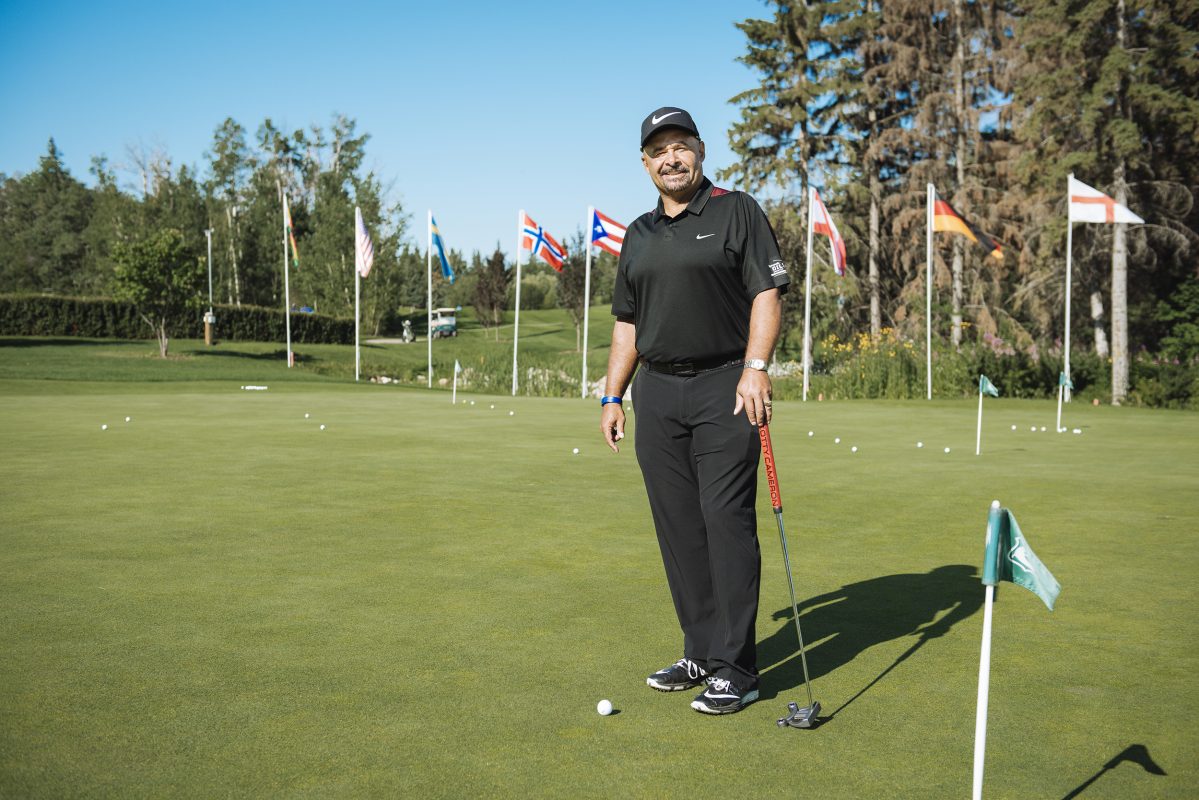Ahhhh, the glory days. Those of us who lived in Edmonton since the 80’s remember them fondly. The days of the dynasty. The days when Edmonton was on top of the hockey world. The days of Gretzky, Messier, Kurri, Coffey and… FUHR. Ranked by most as one of the top goalies of all time in the NHL, Spruce Grove native Grant Fuhr is a hockey legend not just in Edmonton, but around the world.
Drafted in the 1981 NHL Entry Draft by the Edmonton Oilers, Fuhr played 10 seasons with the team winning the Stanley Cup four times in five seasons. He was in net for four Cups and has five championship rings because he was part of the 1989-90 Oilers team that Bill Ranford led to the title while Fuhr was injured.
His partying ways landed him in trouble resulting in a suspension from the league for 59 games in the 1990-91 season, which he outlines in his new book, Grant Fuhr: The Story of a Hockey Legend. His reckless drug use at the time led to his suspension from the league. Now, nearly 30 years later, the Hall of Famer has no regrets and has moved on from that stage of his life to become the person he is today.
In 1991, Grant Fuhr was traded to Toronto before moving on a year-and-a-half later to join Buffalo where he helped a young Dominik Hasek break into the league. He was dealt to the Kings in the 1994-95 season before signing as a free agent with the Blues before the start of the 1995-96 season. Even though over the next three years he became one of the three winningest goaltenders in Blues history he never fully recovered from a knee injury that ended his playoff run in 1996. After the Blues signed Roman Turek as their new number one goaltender in 1999, Fuhr was traded to the Calgary Flames where he announced his retirement prior to the 2000-01 season.
We sat down with Grant to have him share with us some of the challenges he’s faced since retiring and asked him to reflect on some of the differences athletes today face in their training regimen when compared to his days of glory in the crease.
“The training for goalies today isn’t much different from my days.” says Fuhr. He remembers spending time in the gym doing a lot of cardio, stretching and leg weights to be in top form. Not a whole lot has changed. As a goaltending coach with both Calgary and Phoenix, he says that there is a lot more time spent today looking at video and working on hand-eye coordination and reflexes.https://www.youtube.com/embed/r0CZJXqF1IY?feature=oembed
“Tons of work using the light board and working with tennis balls.” says Fuhr, According to Fuhr both of these exercises aren’t designed to make the athlete physically strong, rather work on their reflexes and improve hand-eye coordination. He remembers the Oilers being the first club in the league to bring in the light board. My brother-in-law was a junior goaltender in the 90’s and I remember him working on this piece of equipment ,which is like a super sized version of the ‘patty cakes’ game seen at Galaxyland in the old days where buttons light up and you have to tap them quickly to get points and win tickets.

Goalies today also do a lot more offseason training when compared to the days of Fuhr. “They workout like mad in the offseason” he says “This is different from the way I played where I would often be heavier at the start of the season and play into my game shape. My coaches didn’t always like this, but I felt it was necessary so that I could make it through a long season without injury.”
Transitioning away from a long career as a top professional athlete can be tough. Grant realized near the end of his career that he was spending more time in the trainer’s room than he was on the ice. After having numerous knee and shoulder injuries he realized it was time to start thinking about retirement.
“The first couple of years away from the game, I didn’t do anything. I wanted to heal the body” he says. He quickly gained 25 pounds largely due to not changing his diet after becoming less active. Many know that Grant Fuhr is an avid golfer and kept up that part of his activity four to five days a week. He tried Pilates for a few years, but due to having a knee replacement, he found the movements too painful to continue.
Without the goal of training for the upcoming season and showing up at training camp in proper shape and normal playing weight, it was easy for him to gain that weight. “There was nothing to push for,” he says. “When I was playing, I could show up a little heavy at the start of the season and I knew I’d be good come playoff time. I’d use the season to train for the playoffs often starting the season over 200 pounds and finishing in the 180s.”
Today, Grant Fuhr works out as the body allows or feels. “I love golfing” he says. “I do it mostly for the mental game putting in more than three miles a day four to five days a week” It’s a bit easier for Grant to do this year round in places like Palm Springs, where he was at the time of our interview.
Fuhr has some great parting words for young athletes hoping to make a big splash and excel in their sport. After a knee injury suffered in the playoffs while playing for the Blues when Nick Kypreos fell on him in the first round, he was told the chances of a comeback was highly unlikely. He credits his comeback to a lot of hard work and his personal trainer Bob Kersee, who is also the husband of American track superstar Jackie Joyner-Kersee.
“The body is a wonderful thing”, says Fuhr. “It’s the mind that is the most delicate.” Once he committed his mind to the process of training to comeback, his body followed suit. “The mind can easily shut down the body” he says. “Get your mind right and the body will follow. The hardest part of any sport is the six inches between your ears.”









